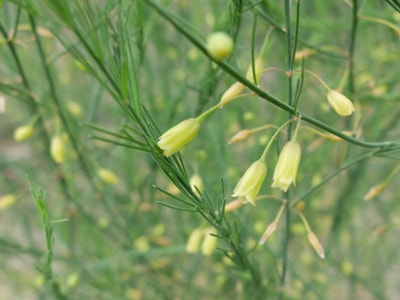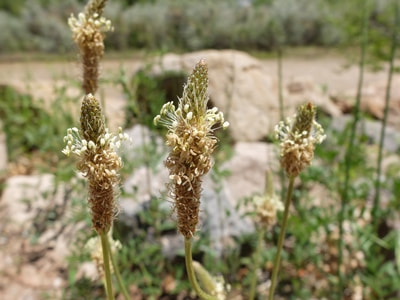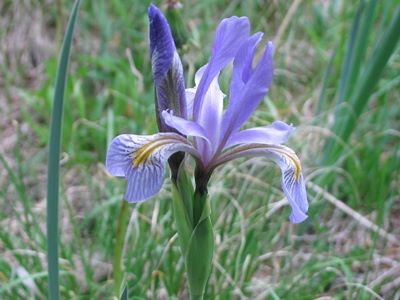|
Found in wet areas, riverbanks, ditches
Seen blooming in June by Acequia de La Puente, Abiquiu Western Dock grows from 4 to 6 feet tall. Leaves are narrowly triangular or lance-shaped up to 14" long with smooth or slightly wavy edges. Flowers are greenish-pink and grow in dense clusters on branches at the top of the stems. Flower heads turn reddish-brown at maturity. The flower to the right of the Dock is Showy Milkweed. Western Dock is edible. Young leaves can be cooked and used like spinach. They have a bitter taste; Native Americans added oil to improve the flavor. Young stems can be cooked and used like rhubarb. Seeds can be ground into a powder and used to make a gruel or added to cereal flours when making bread etc. but they are rather small and fiddly to harvest. Traditionally, the leaves have been used in herbal sweat baths to treat pains similar to rheumatism all over the body. A poultice of the leaves and mashed, roasted roots was applied to sores, boils and wounds. A poultice of the root paste was applied to cuts and boils. Source. In modern Dermatology an extract from the plant is used to reduce the formation of unwanted pigmentation and age spots and to improve skin tone. When I was a child in England we were told to rub the juice from a crushed dock leaf on nettle stings; it worked. If you trying to identify a different flower then you can check what other flower bloom this month. If you cannot identify a flower from the website, send a photo and where you took it to [email protected]. Read online for tips.
0 Comments
Found in roadsides, fields, ditches
Seen blooming in June near the Rio Chama Not truly a native wildflower because asparagus was introduced into North America by European settlers and escaped into the wild. It grows to 5 feet tall with a stout stem, airy thin branches and feathery, leaf-like stems. Flowers are tiny yellowish bells which produce a berry that turns red at maturity. Young shoots are edible: once the buds start to open, fern out, the shoots become woody. It has been widely cultivated for its young shoots since ancient Greek times. Mature asparagus, on the other hand, has been known to poison cattle and the red berries are suspected of poisoning humans. Native Americans used an infusion of the plant for rickets and a decoction with the roots was used as a foot soak for rheumatism. Source. Georgia O’Keeffe had a simple recipe for wild asparagus: 1 bunch (around 12 ounces) wild (or cultivated) asparagus Butter or oil, to taste or for sautéing Herb salt and freshly ground pepper Wash the asparagus carefully to remove all fine sand. Cut the woody part of the stem off, keeping the asparagus in long pieces. This can be steamed for 5 to 7 minutes or sautéed for 5 minutes over medium heat. Add butter, salt and pepper to taste. From the book “A Painter’s Kitchen” by Margaret Wood. If you trying to identify a different flower then you can check what other flower bloom this month. If you cannot identify a flower from the website, send a photo and where you took it to [email protected]. Read online for tips. Found in lawns, meadows, roadsides
Seen blooming in June near the Rio Chama English Plantain is a common weed on cultivated or disturbed land but it is interesting. It grows to 30 inches high with a rosette of long, lance-shaped, strongly veined leaves. The tiny, brownish flowers are tightly clustered in a spike and open in a ring starting at the bottom with protruding white stamens. Very young leaves can be eaten raw or cooked. Seeds can be ground into a powder and added to flours when making bread, cakes, etc. Flower heads taste surprisingly like mushrooms. Plantago species contain anti-inflammatory, antibacterial, anti-allergy and wound healing compounds. It was recorded as one of the nine sacred herbs in a remedy in the Anglo-Saxon Lacnunga, a 1,000-year-old text held in the British Library. The remedy contained nine herbs for wound healing, and modern scientific research shows that its chemical compounds support this traditional use. It is used in the treatment of a wide range of complaints including insect bites, cuts and wounds, hay fever and sinusitis, digestive disorders from diarrhea to constipation, cystitis, asthma and coughs. Source. If you are trying to identify a different flower, then you can check what other flower blooms this month. If you cannot identify a flower from the website, send a photo and where you took it to [email protected]. Read online for tips. Found in moist meadows
Seen blooming at the end of May on CR 115, Canjilon Rocky Mountain Iris is easily recognized because of its distinctive, showy flower. It grows from 1 to 2 feet tall in large patches with stiff, narrow, green leaves and stout, leafless flower stalks. Flowers are about 3 inches across and vary in color from blue to violet to blue streaked with purple, rarely white. Native Americans used the Rocky Mountain Iris medicinally to treat all kinds of problems, most notably skin conditions. The roots of the plant were used to treat toothaches, gum sores, and other mouth problems. The leaves were often made into a tea that could be used to provide relief from kidney and bladder infections. A poultice of the mashed roots has been applied to rheumatic joints and also used as a salve on venereal sores. Caution is advised when handling and using this plant as it’s toxic and potentially harmful if not properly understood. Source. If you trying to identify a different flower then you can check what other flower bloom this month. If you cannot identify a flower from the website, send a photo and where you took it to [email protected]. Read online for tips. |
AuthorI am Marilyn Phillips, a native of England, whose love of nature and the outdoors from childhood brought me by a circuitous route to Crested Butte, Colorado in 1993 and 16 years later to northern New Mexico. My exploration of the many trails in these areas, my interest in wildflowers and photography, and career in computer system design came together in this creation. If you have any corrections, comments or questions, please contact me by email. Archives
September 2025
Categoriescopyright © 2020
|






 RSS Feed
RSS Feed